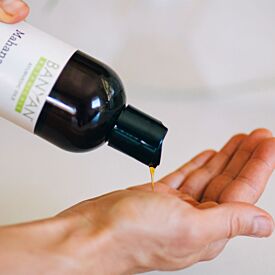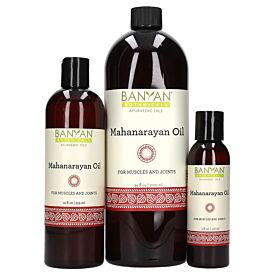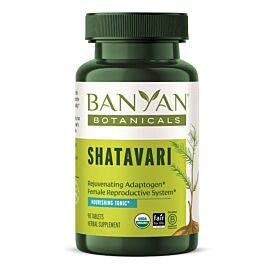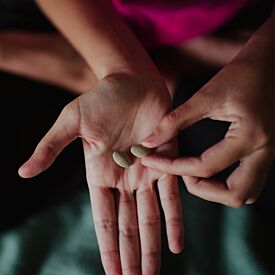The Benefits of Shatavari
Shatavari (Asparagus racemosus) has been used for centuries in Ayurveda to support the female reproductive system, and as a support for the digestive system, especially in cases of excess pitta. Sometimes spelled "shatawari," its name is translated as “having one hundred roots” and also referred to as meaning “having one hundred husbands."1, 2
Shatavari’s name gives reference to its traditional use as a rejuvenative tonic to help women gracefully transition through various phases of life, including menopause and beyond. However, people of all ages and genders can also benefit from shatavari.3
In this article:
- Characteristics of the Shatavari Plant
- Benefits of Shatavari
- Shatavari and Ayurveda: Traditional Uses
- Modern Research
- Is Shatavari Safe?
- Growing and Harvesting Shatavari
Characteristics of the Shatavari Plant
A member of the asparagus family, the shatavari plant thrives in many parts of tropical India and Asia. It is a feathery, thorny perennial with thin, striated leaves, slender stems, and an abundance of delicate, white, fragrant flowers. It also boasts deep red berries and—most importantly—a vast network of unctuous, tuberous roots. One shatavari plant can produce up to 100 tubers. This is the part of the plant that is used for food and as an herbal supplement in Ayurveda.4, 5
Speaking from an organic shatavari farm in the Indian state of Rajasthan, Banyan co-founder, Kevin Casey, tells us more about this rejuvenating tuberous root.
Benefits of Shatavari
The nourishing properties of shatavari are used traditionally to support a number of systems and functions in the body:6
- Promotes a healthy reproductive system
- Gently soothes the digestive tract
- Soothes and supports the respiratory tract
- Promotes healthy energy levels and strength
- Supports the immune system
- Contains naturally-occurring antioxidants7
Shatavari and Ayurveda: Traditional Uses
Shatavari is used in Ayurveda to balance pitta and vata dosha, but can increase kapha due to its heavy nature. If you don’t know your Ayurvedic body-type, take the free dosha quiz.
Bitter and sweet in taste, shatavari has a cooling effect on the system, and its unctuous, building nature makes it a great support for anyone looking for a nourishing, grounding effect.8
These combined qualities classify it among Ayurvedic herbs as not only a powerful rasayana (rejuvenative) for the reproductive system, but also as a renowned tonic for the digestive system and blood—particularly in cases of excess pitta.9
How to Take Shatavari
Shatavari can be taken as a powder or tablet. Ayurveda prefers the powder form of herbs because tasting the herb starts the digestive process and sends signals to the body to initiate the body’s own supportive mechanisms.
- Shatavari powder is the most traditional form of taking the herb. It is usually taken with an anupan (carrier substance) to help bring its effects deeper into the tissue layers. Try it with milk and sugar, honey, or ghee. It is also sometimes cooked into an herbal shatavari ghee for an especially building and nourishing blend.10
- Shatavari tablets can be easier to use for those who desire the convenience of a tablet or do not like the taste of the powder.
Thanks to its many benefits, shatavari is a favorite in a wide variety of formulas. The following formulas blend shatavari with other supportive herbs and ingredients to harness shatavari's adaptogenic properties, rejuvenating qualities, ability to soothe vata and pitta, and more.
- Stress Ease
- Women’s Support
- Women's Natural Transition
- Healthy Vata
- Healthy Pitta
- Mahanarayan Oil
- Vata Massage Oil
- Pitta Massage Oil
- Beauty Balm
- Chyavanprash
Modern Research
There is a growing number of studies on Asparagus racemosus and its many benefits. A good review of available studies can be found at the following links:
- “Plant profile, phytochemistry and pharmacology of Asparagus racemosus (Shatavari): A review.” PubMed extract. Jun 2013.11
- “Asparagus racemosus—ethnopharmacological evaluation and conservation needs.” PubMed extract. Mar 2007.12
- The Effects of asparagus racemosus supplementation plus 8 weeks of resistance training on muscular strength and endurance.” PubMed extract. Jan 2020.13
- “Asparagus racemosus—an update.” PubMed extract. Sept 2003.14
Is Shatavari Safe?
Shatavari is well tolerated in traditional use, and no significant adverse effects have been reported.
Contraindications
Shatavari, as part of the asparagus family, should be avoided by anyone with an allergy to asparagus. From an Ayurvedic perspective, one should avoid shatavari in cases of excess kapha, congestion, and ama.15, 16
In the West, as the exact role of phytoestrogens is still unknown, people with estrogen sensitivities, including estrogen-sensitive tumors, are advised to use caution with foods and herbs containing phytoestrogens, which would include shatavari.17, 18
Always consult your health care practitioner if you have questions related to your particular condition.
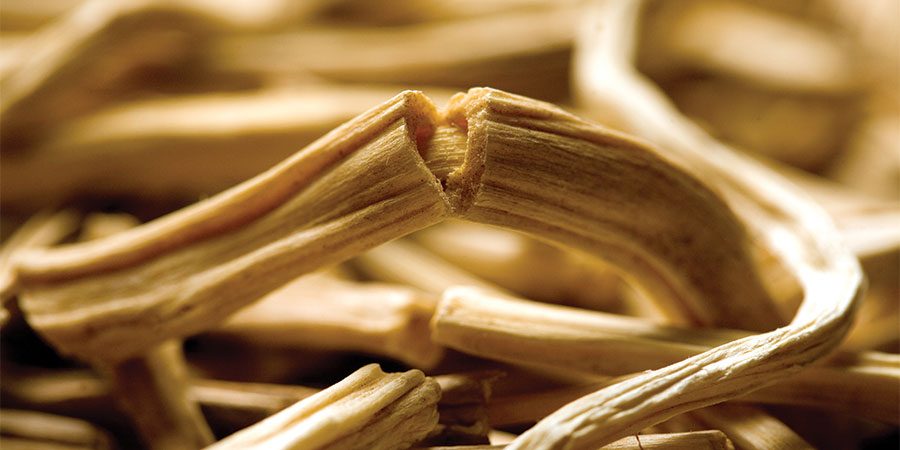
Growing and Harvesting Shatavari
While shatavari is often found growing in tropical climates, it can also thrive in a variety of environments—including dry, arid conditions. Much to the initial surprise of our partners in India, our shatavari seems to favor the hot desert climate of Rajasthan. It is there, on an organic farm, that our shatavari is grown and harvested.
It takes the shatavari plant about 18 months to reach maturation. First, the farmers seed the sandy soil, then tend to each shatavari plant using a solar-powered drip-irrigation system to help maximize the growing potential of its many roots.
Harvesting Shatavari
Once it's ready to be harvested, a large hole is carefully dug around the roots to avoid damaging them upon retrieval. No easy task, harvesting a shatavari plant can take more than half an hour. If the ground is rocky, the process can take even longer.
After harvesting, each root gets a rigorous wash and is peeled of its thick outer layer. It dries quickly thanks to the desert air, and once it's ready, it ships to our warehouse in Albuqerque, New Mexico.
Sustainability of Shatavari
Wild shatavari historically grew in much greater abundance, but due to increased demand and other factors, shatavari has become over-harvested—and even endangered—in some parts of the world.
At Banyan Botanicals, we partner with organic farms to ensure that we're providing you with shatavari that has been sustainably and organically grown.

